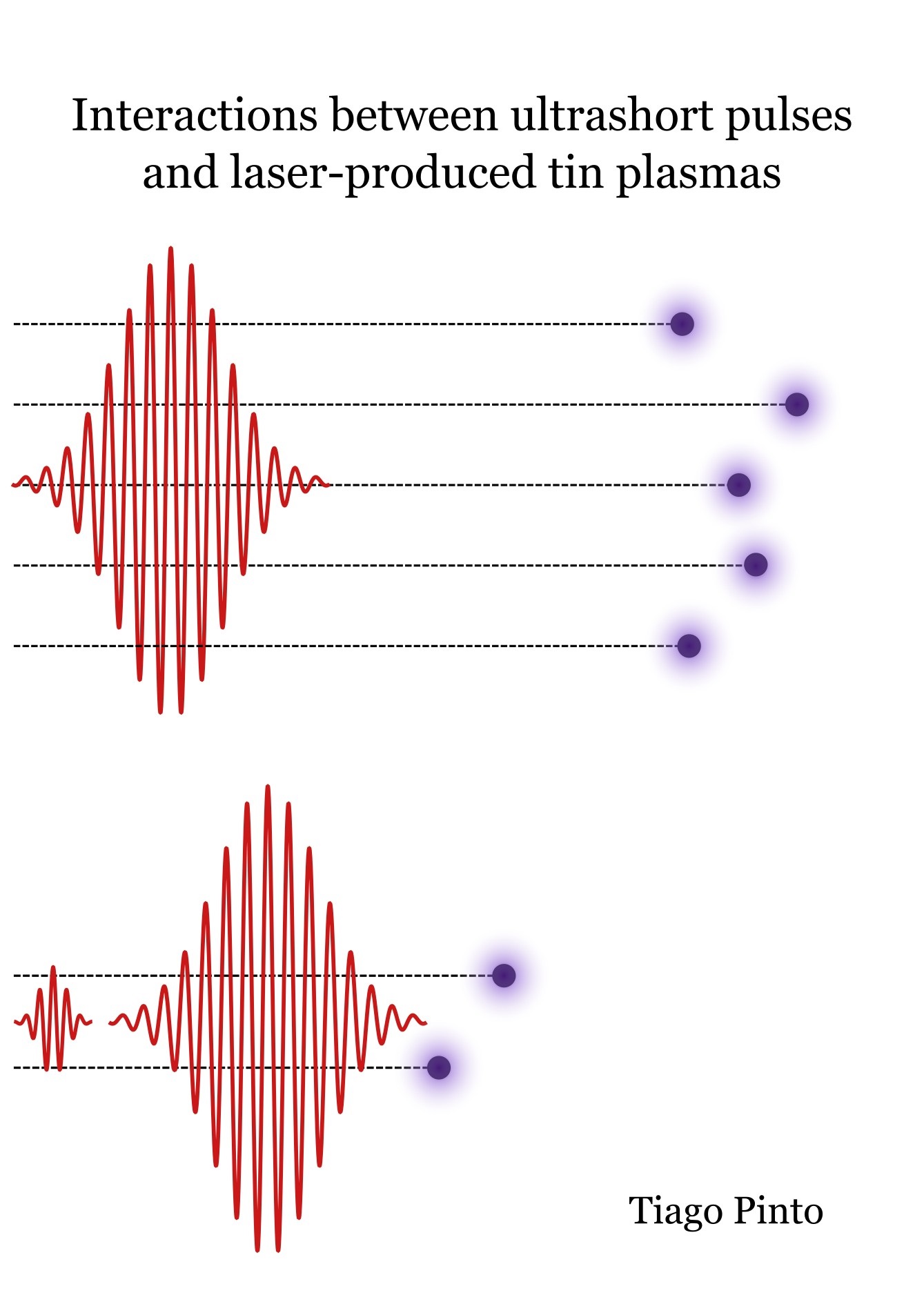Interactions between ultrashort pulses and laser-produced tin plasmas
Inside commercial EUV nanolithography sources, micrometer-sized droplets of liquid tin are irradiated by a high-power CO2 laser, creating a plasma which emits 13.5 nm light. However, liquid spheres are an inefficient target shape for EUV production. To solve this, each droplet is irradiated by two laser pulses. Firstly, a low-energy pre-pulse deforms the droplet into a shape more favourable for EUV production. Afterwards, a high-energy main pulse irradiates this deformed droplet.
Typically, pre-pulses with nanosecond durations are used to deform the droplet into a thin disk. An alternative approach uses pre-pulses with picosecond or femtosecond durations. These shorter pulses create intense shock waves on the droplet surface, which propagate through the droplet focusing at its center, rupturing the droplet into fine particles.
To study the dynamics of these “cloud” targets, we designed and built a laser system comprising a 1064 nm Nd:YAG-based amplifier and a 1.55 μm KTA-based OPCPA, which combined can produce pulses with durations from 220 fs to 100 ps.
Using single ultrashort mJ-level pulses, we study the effects of pulse energy and duration on microdroplet deformation and the charge-state distribution of the ions emitted by the created plasma. Using linearly-polarized pulses, cylindrically-asymmetric shock waves were produced, leading to novel asymmetric target shapes which show good agreement with simulations.
By irradiating droplets with pairs of pulses, we produced novel target shapes which were keenly dependent on the energy of the first pulse and the time delay between the pulses. These parameters also strongly affected the charge-state-resolved energy distribution of the emitted ions, showing a strong reduction in the amount of highly-charged ions detected and a reduction of the overall mean ion energy, compared to the single-pulse case.









